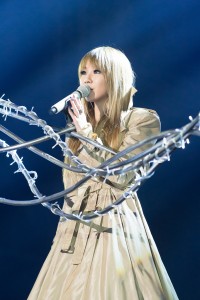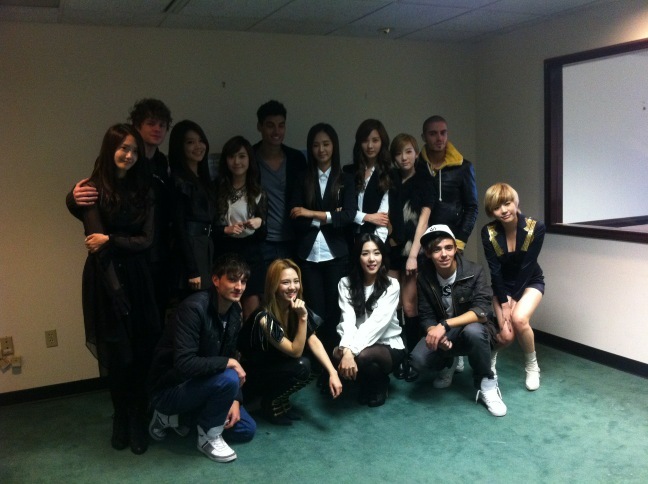Often it seems that K-pop provides the perfect formula for making the quintessential pop group – catchy hits, pretty faces, intricate choreography, great vocals, fancy music videos – what else could you want? However, after leaving my K-pop bubble this past year to follow some Western boybands/girl groups, specifically ones from the UK, I realized that K-pop desperately lacks something I never really noticed before: harmonization.
 That isn’t to say that there are absolutely no harmonies in K-pop songs – like a lot of pop songs, K-pop songs do sometimes feature harmony lines that can be hard to single out amidst the processing of the voices and loud instrumentals. However, what is striking is that no matter what harmonies might lie in a song, they are often not performed live but are rather left to the backing track. In contrast, bands like One Direction and The Wanted always have at least one person (if not two or three) singing a harmony line live. And while harmonization isn’t exactly crucial to pop music, it is a simple but effective way to add dimension to a song and make it sound less basic.
That isn’t to say that there are absolutely no harmonies in K-pop songs – like a lot of pop songs, K-pop songs do sometimes feature harmony lines that can be hard to single out amidst the processing of the voices and loud instrumentals. However, what is striking is that no matter what harmonies might lie in a song, they are often not performed live but are rather left to the backing track. In contrast, bands like One Direction and The Wanted always have at least one person (if not two or three) singing a harmony line live. And while harmonization isn’t exactly crucial to pop music, it is a simple but effective way to add dimension to a song and make it sound less basic.
Which makes one wonder – why do K-pop groups not partake in harmonization? K-pop groups use their multiple voices mainly to give tiny solo lines to each individual member, even though one of the benefits of singing in a group is the ability to have multiple different voice parts layered on top of each other at any given time. When one considers that One Direction can have two out of their five members on different harmonies, it’s fascinating to think that larger K-pop groups somehow are not able to have at least one voice sing a harmony line. Obviously not everyone in K-pop is a vocalist, but even groups comprised of only super strong vocalists don’t always bother with harmonization, which can be a bit disappointing – I would’ve much rather had TaeTiSeo harmonize a few times in “Twinkle” as a demonstration of the group’s vocal cohesion and complexity versus all the adlibs that just highlight the talent of individual members.
 Now of course, One Direction and The Wanted do not dance, and a defense that is often brought up when it comes to critiques of vocals in K-pop performances is that it is difficult to dance and sing at the same time. And while I am sure that’s true, choreography does not need to cancel the presence of interesting vocals. British girl group Little Mix dance on stage all the time while singing some kick-ass harmonies, and while granted their choreography isn’t as difficult as the stuff in K-pop, that isn’t necessarily a bad thing – considering that K-pop is (ideally) first and foremost music, I’m sure the genre could afford to tone down the visuals a little for the sake of upping the complexity of the vocals. And it’s not as if more low-key K-pop performances bother with harmonization either—2NE1 never perform the harmonies that are present in the song “Lonely” even though they would add so much more musical depth/complexity to the more acoustic setting. For example, in studio sessions, the harmonies are either cut out or just inserted later on top of the solo lines to beef their vocals up, which makes no sense since the girls could just as easily sing those lines live.
Now of course, One Direction and The Wanted do not dance, and a defense that is often brought up when it comes to critiques of vocals in K-pop performances is that it is difficult to dance and sing at the same time. And while I am sure that’s true, choreography does not need to cancel the presence of interesting vocals. British girl group Little Mix dance on stage all the time while singing some kick-ass harmonies, and while granted their choreography isn’t as difficult as the stuff in K-pop, that isn’t necessarily a bad thing – considering that K-pop is (ideally) first and foremost music, I’m sure the genre could afford to tone down the visuals a little for the sake of upping the complexity of the vocals. And it’s not as if more low-key K-pop performances bother with harmonization either—2NE1 never perform the harmonies that are present in the song “Lonely” even though they would add so much more musical depth/complexity to the more acoustic setting. For example, in studio sessions, the harmonies are either cut out or just inserted later on top of the solo lines to beef their vocals up, which makes no sense since the girls could just as easily sing those lines live.
On the occasions that K-pop artists do use harmonies, they sound phenomenal – just look at DBSK’s a cappella tracks, live performances of Super Junior KRY singing “Sorry Sorry Answer”, or performances by the rookie group Lunafly. And while these songs have a slower, more low-key feel than a lot of K-pop songs, we know harmonization can be done within the context of faster, more intense songs too – for example, EXO-K’s harmonizing in their “MAMA” performances, while not always perfect, was impressive for not only its novelty but also because of the difficulty that was already involved in performing that song. With all this in mind, the fact that harmonies are rare enough to be considered something notable is kind of odd given how easily they could potentially fit the genre. But honestly, what strikes me the most is that among all the incredible things K-pop vocalists are often shown to do (all those high notes and vocal runs), singing different parts at the same time isn’t one of them.
What do you think? Should K-pop add more harmonies? Or are would they just not fit with the genre?


